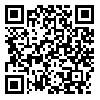BibTeX | RIS | EndNote | Medlars | ProCite | Reference Manager | RefWorks
Send citation to:
URL: http://rjms.iums.ac.ir/article-1-1835-en.html

 , Mitra Heydari Nasrabadi
, Mitra Heydari Nasrabadi 
 , Maryam Tajabadi Ebrahimi
, Maryam Tajabadi Ebrahimi 
 , Mohammad Shabani
, Mohammad Shabani 
 , Helia Aboutalebi
, Helia Aboutalebi 

Background : Probiotics are defined as different microorganisms that may have positive effects on preventing or treatment of special pathologic conditions. The actions of lactic acid bacteria are species and strain specific, and depend on sufficient numbers of bacteria being available in the intestines. The difficulty in identifying and classifying strains has complicated research, since benefits may only pertain to particular strains. Since there is no research regarding Iran’s probiotics up to now thus, the present study was designed to investigate the effect of Lactobacillus brevis on cutaneous wound healing.
Methods : In this experimental study, 22 strains of Lactobacillus isolated from dairy-traditional products of exopolysaccharide production are investigated by phenol-sulfuric acid method. Lactobacillus brevis, which had high exopolysaccharide (EPS) production, was selected. A full-thickness square wound (1.5 × 1.5 cm) was made on the back of each rat (45 rats in 3 groups). Two groups, control and experimental were treated by eucerin and eucerin contained 1×1o 11 CFU/ml Lactobacillus brevis, but the negative-control group did not receive anything. Rats were killed on days 1, 3 and 14 and wound samples were collected for histological and statistical studies. The data were expressed as mean±Standard deviation. Statistical analysis was performed with ANOVA .
Results : The percent of wound healing (91.76%) and inflammation in experimental group on day 14 as compared to control (74.33%) and negative groups (73.51%) was significant (p<0.001). The numbers of neutrophils in experimental group were reduced in later phase of wound healing as compared to control and negative groups.
Conclusion : The current study showed a significant reduction in inflammation and a significant acceleration in wound healing on the rats treated by Lactobacillus brevis as compared to control and negative control groups. Further studies are required for detail mechanism of Lactobacillus brevis during wound healing


